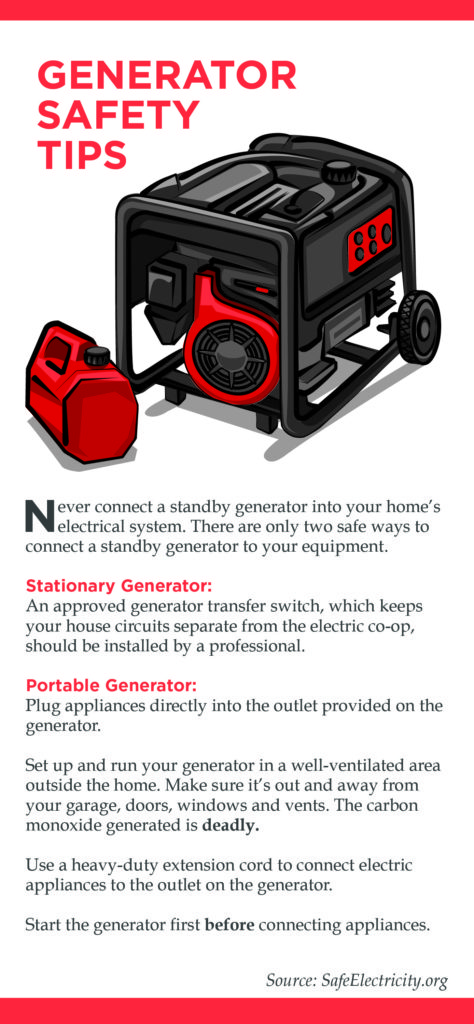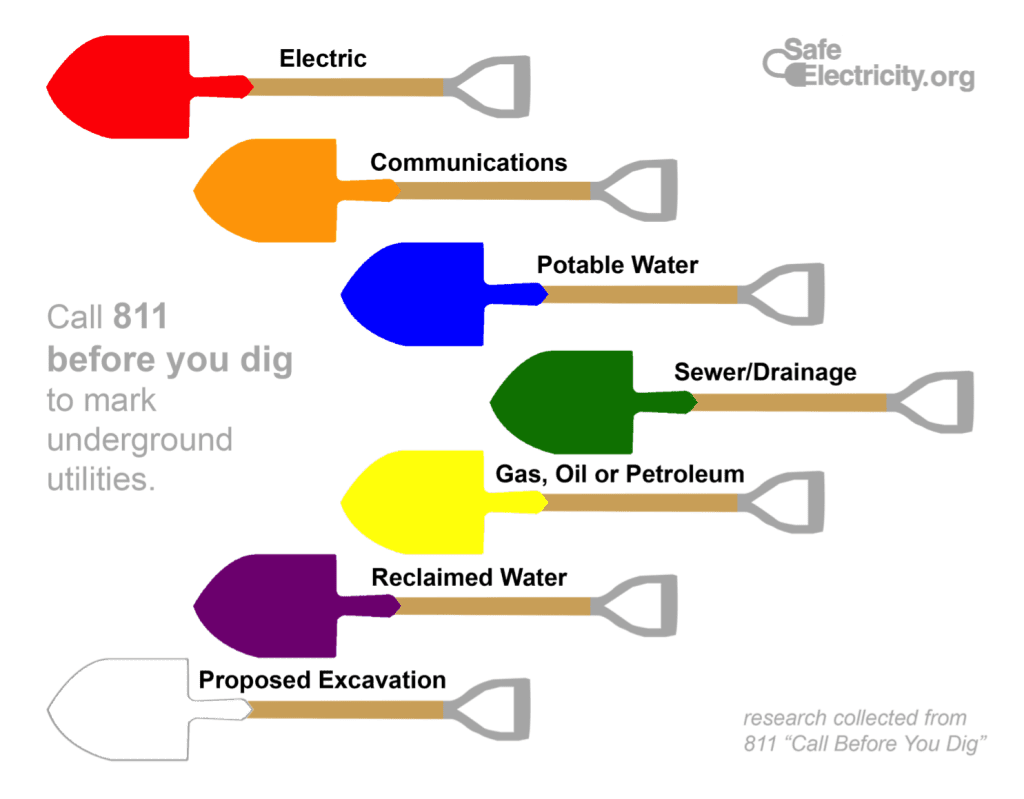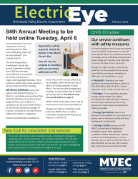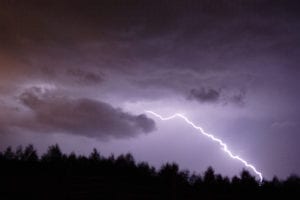 Electricity always seeks the shortest path to the ground and looks for a good conductor, such as metal, that transmits it easily. The human body is also a good conductor because it is about 70% water. If you touch anything with a live current, a bare wire, or faulty connection, electricity will pass through you to the ground. Depending on the strength of the current, the electricity could seriously injure or fatally shock you.
Electricity always seeks the shortest path to the ground and looks for a good conductor, such as metal, that transmits it easily. The human body is also a good conductor because it is about 70% water. If you touch anything with a live current, a bare wire, or faulty connection, electricity will pass through you to the ground. Depending on the strength of the current, the electricity could seriously injure or fatally shock you.
- Downed power lines: Always assume downed power lines are “live” and stay away. Do not attempt to remove anything in contact with a downed power line or drive across a downed power line.
- Vehicle safety: If your vehicle or tractor comes in contact with a downed power line, stay inside and use your cell phone to call for help.
- Personal contact: If someone is shocked by contact with a downed line, call 911 immediately and do not touch the person.
- Metal ladders: Never use a metal ladder when working anywhere near power lines or electrical devices. When using a wooden or fiberglass ladder, keep clear of electric lines.
- Flying kites: Teach children to never fly kites, model airplanes, or balloons near overhead power lines.
- Climbing trees: Warn children to never climb a tree that is near power lines. If the wind or child’s weight causes a limb to touch a wire, there is a danger of electrocution to anyone in or near the tree.
- Transformer boxes: Do not let children play on or near transformer boxes, or put anything in them. If you see an unlocked transformer box, please contact MVEC.
Computers, kitchen appliances, heaters, fans, air conditioners – any equipment powered by electricity has the potential to be involved in an electrical fire. Electrical safety awareness is always important, but during this particular time of the pandemic, it is even more so as thousands of workers and students have left offices and classrooms to work and learn from home. This means more family members are now online, watching television, and using appliances all at once — and for longer periods of time.
You can take simple steps to greatly reduce electrical hazards like learning the proper way to plug in appliances, safeguarding electrical outlets in the home, and more.
Homeowners should also have all electrical work done by a qualified electrician, including scheduling electrical inspections when buying or remodeling a home. It is critical that you call a qualified electrician immediately if you experience any of the following:
- Frequent problems with blowing fuses or tripping circuit breakers
- A tingling feeling when touching an electrical appliance
- Discolored or warm wall outlets
- A burning or rubbery smell coming from an appliance
- Flickering or dimming lights
- Sparks from an outlet
Conduct your own home electrical inspection:
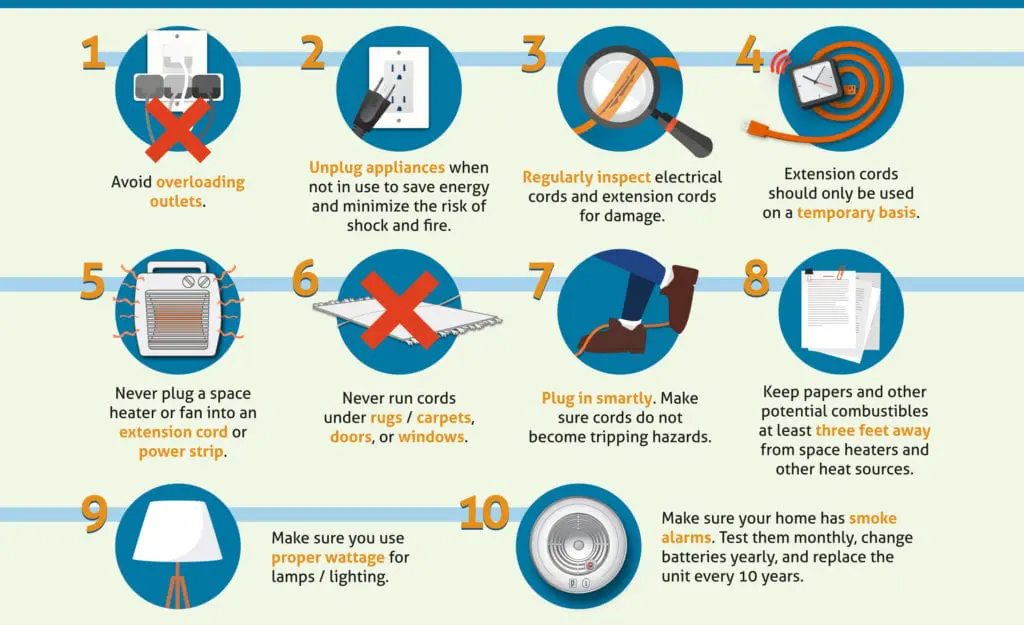
A critical part of safety around electricity is awareness. It’s important to remember that farm machinery is vulnerable to hitting power lines because of its large size, height, and extensions. Being aware of the location of overhead power lines and planning a safe equipment route can help reduce accidents.
When using equipment with auto-guidance systems, less focus is needed on steering, which may lead some drivers to think that they do not need to be as aware of navigation issues. However, even while using a GPS with auto-steering, farmworkers need to keep safety in mind and stay focused on their surroundings.
Regardless of the technology used on the farm, keep the following electrical safety guidelines in mind:
- Use a spotter when operating large machinery near power lines.
- Keep equipment at least 10 feet from power lines—at all times, in all directions.
- Look up and use care when moving any equipment such as extending augers or raising the bed of grain trucks around power lines.
- Inspect the height of farm equipment to determine clearance.
- Always set extensions to the lowest setting when moving loads to prevent contact with overhead power lines. Grain augers should always be positioned horizontally before being moved.
- Never attempt to move a power line out of the way or raise it for clearance. If a power line is sagging or low, contact our Dispatch Center at (952) 492-8255 or (800) 232-2328.
If your equipment does make contact with a power line, do not leave the cab. Immediately call 911, warn others to stay away, and wait for the utility crew to cut the power. The only reason to exit equipment that has come into contact with overhead lines is if the equipment is on fire, which is rare. However, if this is the case, jump off the equipment with your feet together and without touching the ground and machinery at the same time. Then, still keeping your feet together, hop to safety as you leave the area. For more information on electrical safety, visit SafeElectricity.org
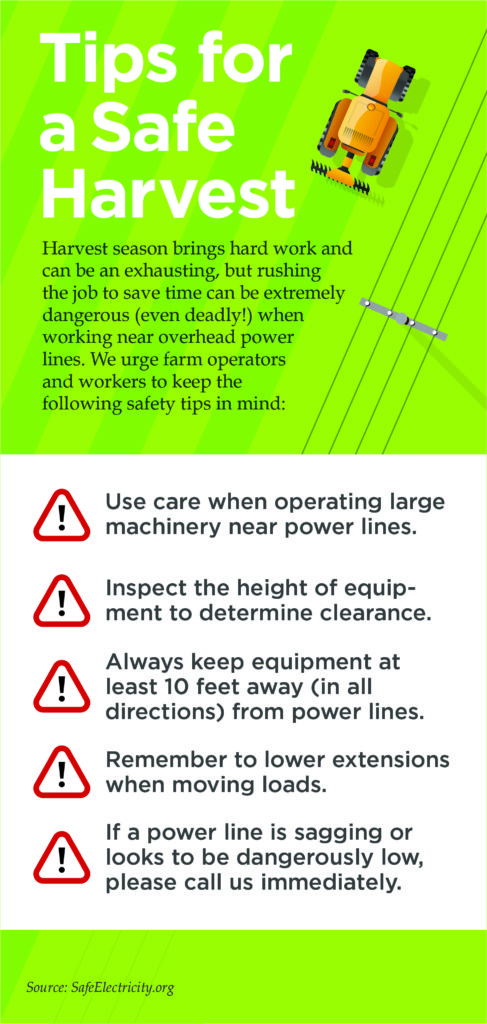
When winter temperatures drop and storms hit, it can be challenging to stay safe and warm. Winter storm severity varies depending on where you live, but nearly all Americans are affected by extreme winter storms at some point. Heavy snow and ice can lead to downed power lines, leaving co-op members without power. During extremely low temperatures, this can be dangerous. During a power outage, our crews will continue to work as quickly and safely as possible to restore power, but there are a few things you can do to prepare yourself.
- Stay warm – Plan to use a safe alternate heating source, such as a fireplace or wood-burning stove during a power outage. These are great options to keep you and your loved ones warm, but exercise caution when using, and never leave the heating source unattended. If you are using gasoline-, propane- or natural gas-burning devices to stay warm, never use them indoors. Remember that fuel- and wood-burning sources of heat should always be properly ventilated. Always read the manufacturer’s directions before using.
- Stay fed – The CDC recommends having several days’ supply of food that does not need to be cooked handy. Crackers, cereal, canned goods, and bread are good options. Five gallons of water per person should also be available in the event of an extended power outage.
- Stay safe – When an outage occurs, it usually means power lines are down. It is best not to travel during winter storms, but if you must, bring a survival kit along, and do not travel alone. If you encounter downed lines, always assume they are live. Stay as far away from the downed lines as possible, and report the situation to our dispatchers by calling (952) 492-8255 if possible.
When thunderstorms are rolling your way, stay safe with these helpful tips from the American Red Cross:
- Listen to local news or NOAA Weather Radio for emergency updates. Watch for signs of a storm, like darkening skies, lightning flashes, or increasing wind.
- Postpone outdoor activities if thunderstorms are likely to occur. Many people struck by lightning are not in the area where rain is occurring.
- If a severe thunderstorm warning is issued, take shelter in a substantial building or in a vehicle with the windows closed. Get out of mobile homes that can blow over in high winds. If you can hear thunder, you are close enough to be in danger from lightning. If thunder roars, go indoors! The National Weather Service recommends staying inside for at least 30 minutes after the last thunderclap.
- Avoid electrical equipment and telephones. Use battery-powered TVs and radios instead.
- Shutter windows and close outside doors securely. Keep away from windows.
- Do not take a bath, shower, or use plumbing.
- If you are driving, try to safely exit the roadway and park. Stay in the vehicle and turn on the emergency flashers until the heavy rain ends. Avoid touching metal or other surfaces that conduct electricity in and outside the vehicle.
- If you are outside and cannot reach a safe building, avoid high ground; water; tall, isolated trees; and metal objects such as fences or bleachers. Picnic shelters, dugouts, and sheds are NOT safe.
MVEC has an extensive Right of Way tree-clearing program. Crews inspect trees within our service area on a continuous rotational schedule for two reasons:
- To manage trees that pose a problem for system reliability
- To ensure the safety of our members
Inspections
Each year, MVEC crews make a visual inspection of the lines to identify areas where future trimming may be needed.
Clearance Needed
MVEC has the right to trim or remove trees and brush growing within the right-of-way corridor. This is the zone around power poles and lines.
Right-of-way corridors will be:
- 20 feet for single-phase distribution lines on either side of pole center.
- 30 feet for multi-phase distribution lines on either side of pole center.
- Other options are available on a case-by-case basis. This Alternative Maintenance Proposal form must be filled out and on file with MVEC before proceeding.
- If you have additional questions regarding tree clearance on your property, please contact our Dispatch Center at (952) 492-8255.
Tree Removal
Fast-growing, tall trees (such as elms, willows, silver maples) located directly under primary wires can cause repeated outages. To prevent repeat outages and keep the cost of our services down, we prefer to remove these trees rather than frequently prune them. A representative of MVEC will notify the property owner before removing a tree.
De-energizing Lines
MVEC will de-energize lines for professional tree trimmers so they can perform the trimming safely. Please call MVEC Dispatch at (952) 492-8255 or (800) 232-2328 to schedule a de-energizing appointment prior to contacting a tree trimming contractor. Please contact us 48 hours prior to the date you would like your lines de-energized.
Brush Clean-Up
MVEC contractors will clean up brush from a related trimming, but this does not include additional dead/diseased trees, brush/wood from a member’s property, or debris resulting from a storm or emergency trimming. Members may contact their city or county to see if there is an assistance program.
CARR’S TREE SERVICE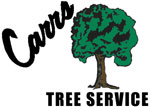
If you have trees on your property that need trimming or removal, you can count on MVEC’s subsidiary, Carr’s Tree Service, to do the job. Carr’s provides FREE estimates for your home or business for tree shaping, tree trimming, tree removal, lot clearing, brush mowing, aerial bucket services, and power stump removal.
Carr’s Tree Service also offers plant health care services, including trunk injections to protect:
- ash trees against Emerald Ash Borer
- oak trees from burr oak blight, insect problems, mitigate oak wilt problems
- elm trees against Dutch Elm Disease
For more information, call Carr’s Tree Service at 888-470-3355.
Gopher State One Call will request detailed information including the type of work planned, location of the site, estimated time needed, and legal description of the site. If underground lines exist in your project area, the utility will mark the location of their lines.
It costs nothing to have this done and can potentially save lives and thousands of dollars. Here are the universal colors for marking underground utilities:
If you are on MVEC’s Critical Service Load list, we can notify you prior to a planned outage allowing you to make alternative arrangements. In the event of an unplanned outage, the cooperative’s restoration process requires the backbone of the system to be restored first. Members on the Critical Service Load list will be placed at the top of the restoration list.
Members with critical health issues should be prepared with back-up plans in case of an outage.
If you believe your household qualifies for the Critical Service Load list, please get a physician’s note, on clinic letterhead, and send it to the address below. Upon receipt, MVEC will call to confirm your phone and location number.
Minnesota Valley Electric Cooperative
Attention: Dispatch Center
125 Minnesota Valley Electric Drive
Jordan, MN 55352
More Resources
